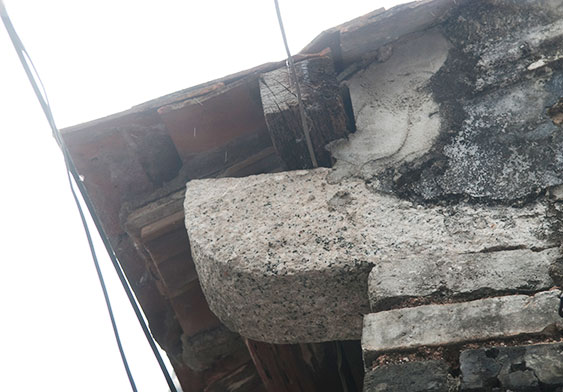
Stopping stones under the eaves
House’s stopping stones were used to mark its area-Photo taken by HKMP Team (2012)
Stopping stones under the eaves
House’s stopping stones were used to mark its area-Photo taken by HKMP Team (2012)
Passion for the "real" history of Nga Tsin Wai
Hung Gu loved to learn of the history of Nga Tsin Wai. She emphasized that the village had a history of 600 years, with tiles from the Ming Dynasty, and the orthodox thirteen rows, stopping stones, door beam and protection houses. Two stopping stones were placed under the roof of each house. They were there to convey the message of ‘no entry’ to anyone who approached the house. It marked the dividing line between the house area and non-house area, and the house owner could not extend his property beyond the line. The thirteen rows referred to the houses with 13 rows of tiles on the roof. In the past, most houses in Nga Tsin Wai were built of stones. The house which Hung Gu lived was built with double-layered stones, which meant the walls had two layers of stones. Besides, each house had a stone door beam for support of the main door. (i.e., the stone placed under the door.) The door beam of Tin Hau Temple was exquisite and refined in design.


 BACK
BACK  CLOSE
CLOSE 